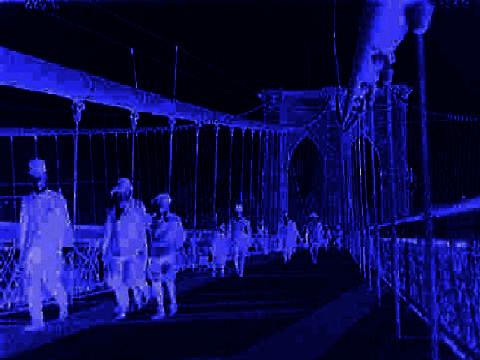 |
When people complain about New York, many complain about the subway. How dirty it is, how late it is and most glaringly, why can't we hear what's being announced over loudspeaker static. With the pro-market forces in Washington calling for increased private sector participation in all levels of government, why not mass transit? Certainly if the subway was run like a profit-maximizing business, the trains would run on time, stations would be sparkling clean and fares would fall rather than rise. Why wouldn't it work today?
Relying on market forces to provide mass transit on a regional scale fails because of problems inherent in using price mechanisms to determine the supply. The huge costs required for infrastructure and rolling stock adequate to serve a large geographic area, makes for slim profits, if at all. The economical effects across the entire city make transit a very long term and wide scale investment, not constrained to a single individual or company. In addition to these market inefficiencies, the price system would allocate transit selectively, denying many citizens of their only mean of transportation. Without some form of public funding and direction, private incentives would not provide enough mass transit to make it beneficial for the whole community.
Economies of scale develop when a company is large enough to supply the transit needs of a city. The large costs of initial capital investment in stations, trackwork or busses means that overall costs would continuously drop with each additional passenger carried. Companies providing transit for an area as large as a city would therefore have monopolistic advantages. With such control over a large segment of the market, the transit monopolist could instantly undercut any competitive firm enticing riders away with lower fares. No one would challenge the monopolist from charging as much as they want for the services they would be willing to provide.
Mass transit allows passengers to get where they want to go. It also has spillover benefits for the entire city. By decreasing the number of vehicles on streets, congestion is lessened. Fewer vehicles on the road reduces fuel emissions and results in cleaner air. Drive time used up in bumper to bumper traffic can be devoted to more productive things. These positive externalities also extend to the economics of commerce. Land values can increase due to proximity to stations or transfer points. Employers benefit from not having to build parking lots or organize vanpools. Even advertisers, vendors and entertainers use mass transit facilities as a means to gain income. By government mandating higher levels of transit than any group of private suppliers would choose to provide, benefits extend not just to those served, but to the whole society as well.
If the entire city defines the market for transit, the price system would also not be able to equitably distribute services to the market without government intervention. Profit-maximizing companies would focus exclusively in serving high demand areas, charging as high a price as the market would bear. Neighborhoods with low car ownership and limited incomes would probably cut back on their travel because they would not be able to pay the additional money. As a result, these areas would get lesser service than those that could afford the fare increase.
Today, competition from the automobile has weakened ridership as well as government support for mass transit. As profits are more easily obtained in automobile-related investments, transit systems rely on dwindling farebox revenues to maintain their operations. Fares have risen tremendously as systems try to maintain levels of service with limited resources. In New York, decreased funding from the city and state sources has led to station closures, bus frequency cutbacks and severe reductions in maintenance and rehabilitation of crumbling stations. If mass transit is considered an integral piece of a city's economic and physical well-being, government intervention must be provided. If left to market forces, revenues will not provide enough profit to allow for improvements in such a large capital investment.
Government funding of mass transit can create inefficiencies too. The bureaucracy of many agencies is large and unwieldy. Contracts and union work rules make adapting to changing transit priorities difficult to implement. Groups that wield political power steer resources away from other more broadly-based projects. Perhaps profit-oriented management techniques and streamlining of procedures can improve service while cutting costs. However, if societal needs are considered as important as economic ones, then it is clear government has a role to play in providing mass transit.
The impact of mass transit extends beyond its role as a conveyor of people. Not only can traffic bottlenecks can be reduced through busses and trains, but growing business and commercial districts will benefit from the high numbers of customers public transportation can bring. Government action not only ensures mass transit options are available to every member of the community, but enables the entire the economy of a city to function more efficiently and equitably.
|